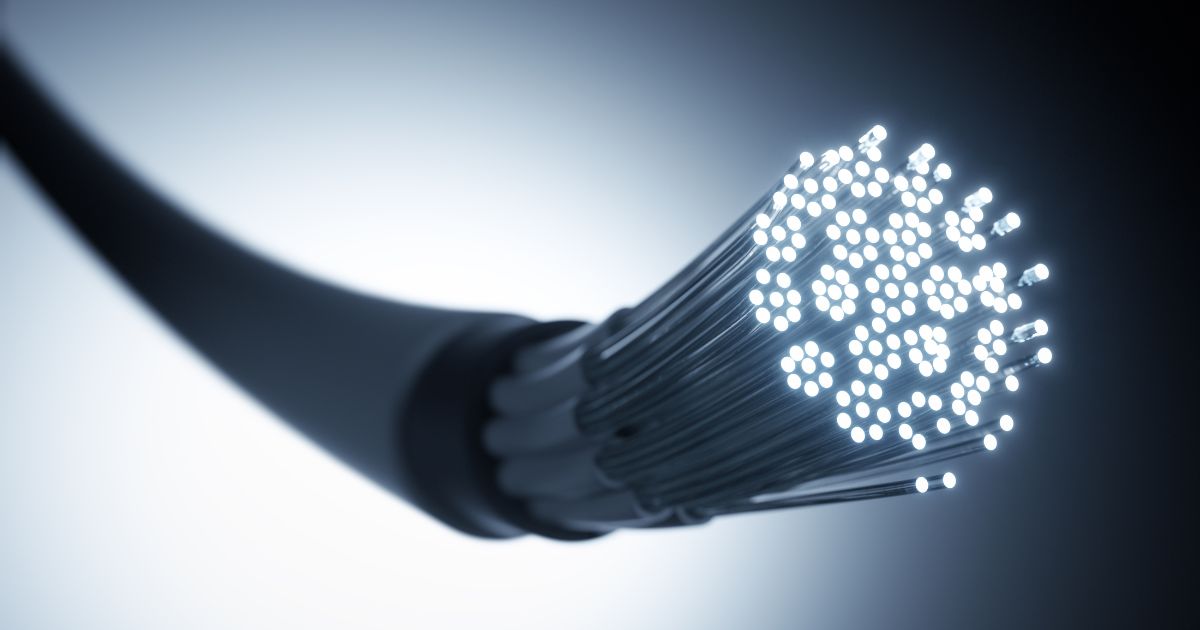
For the longest time ever, copper PCB traces and cables have ruled the world. They’re relied upon to transfer data at incredible speeds, all the while minimizing signal distortion, attenuation, and interference. However, the unfortunate truth is that every technology out there has its limitations. Unfortunately for copper, its limits are dictated by physics which, in essence, cannot be broken.
However, this doesn’t mean we’re stuck with old, outdated copper cables to transfer data. In fact, with physics, we now have a much better solution: optical fiber that transfers data at 70% the speed of light!
Fiber optics is a technology that uses light to transmit data, and it is one of the fastest and most efficient ways to transfer data.
Today, let’s talk about fiber optics and what it promises for the future of data transfer:
1. Increased Speed
Fiber optics is a technology that uses glass or plastic fibers to transmit data. The fibers are extremely thin and are capable of transmitting data at speeds of up to 10 gigabits per second. How fast is this number? It can download a 61-GB film trilogy, or 9 hours worth of movies, in a few minutes.
2. Increased Capacity
Fiber optics also has a much higher capacity than current data transfer methods. This means that fiber optics can handle much more data traffic. Fiber optic cables are also much thinner and lighter than copper cables, making them easier to work with and less likely to cause damage during installation.
3. Lower Costs
At face value, fiber optics may be the more expensive option. However, fiber optics is more cost-effective than other data transfer methods in the long run. It requires less power to operate and is more efficient. This means that fiber optics can help to lower the costs of data transfer. Additionally, fiber optic cables are lighter and smaller, so they take up less space and are easier to install in tight spaces.
4. Greater Distance
Fiber optics can also transmit data over much greater distances than other methods. It is not affected by electromagnetic interference (EMI). This means that fiber optics can be used to transmit data over long distances without any loss in quality.
5. Improved Security
Fiber optics is also more secure than other data transfer methods. It is difficult to tap into a fiber optic cable and intercept the data. This makes fiber optics ideal for transmitting sensitive data. Fiber optics can also carry more data than other methods, making it perfect for high-bandwidth applications like video conferencing or streaming HD video.
Conclusion
Fiber optics is a technology that is set to revolutionize the way that data is transferred. It offers increased speed, capacity, and security. Fiber optics is also more cost-effective and can be used to transmit data over long distances. That said, if your company is looking for a solution to transfer your data at much faster rates, consider installing and using fiber optics. Technology has been around for a while, and it is only getting better as we find new and better ways to utilize the speed of light to our advantage!
With the main focus on custom-software development, Informatics also specializes in infrastructure solutions and services through years of experience and knowledge in the industry. Whether it be insurance, banking, government, or telecom software solutions, Informatics is capable of supporting any company from any industry so that they can reach their full potential. For more information, visit our website today!
Written by Hiran Wickramasinghe
